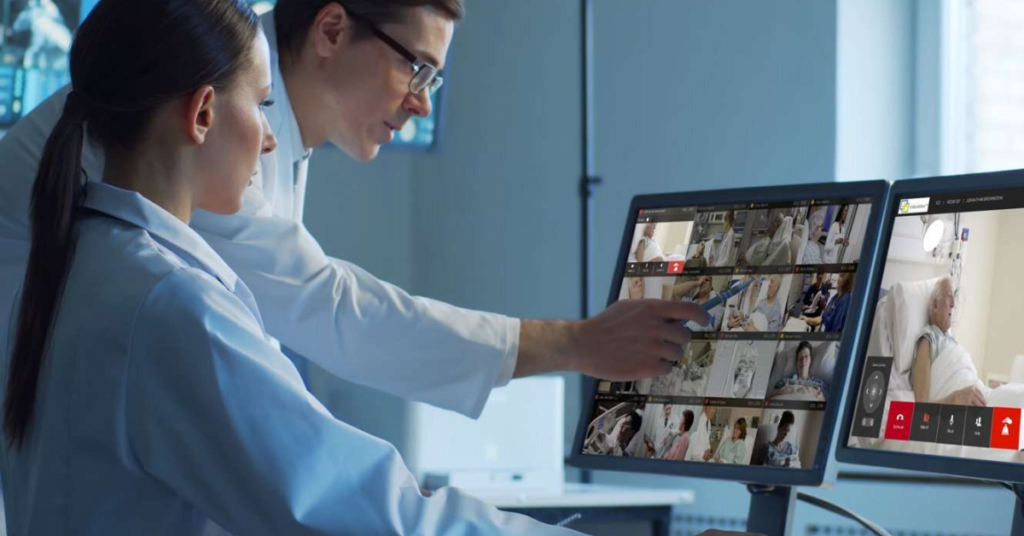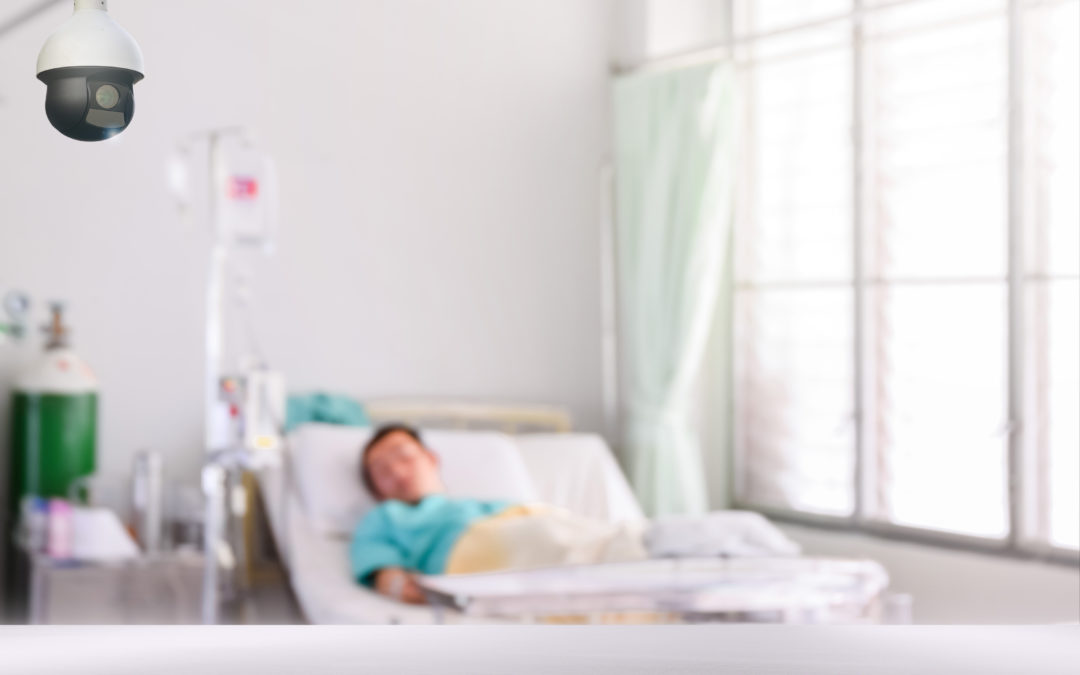Hospitals continue struggling with clinician shortages. According to the American Hospital Association, 23% of hospitals have reported a “critical staffing shortage.” Growing vacancies and turnover in nursing staff, along with associated labor expenses, have been particularly challenging. And when staff is stretched so thin, it can be difficult to maintain a high level of quality care.
Telehealth-enabled solutions like virtual sitters can help mitigate staffing shortages while reducing costs and providing a better patient experience. Following are three opportunities for leveraging virtual sitters in your organization, along with guidelines for choosing the best virtual sitter solution.
Remote Patient Observation
Seventy-three percent of our nation’s total healthcare spending and 93% of Medicare spending goes toward caring for patients with multiple chronic conditions. The largest portion of these costs is from “acute care hospital and emergency department (ED) visits that could be prevented with earlier intervention.” Virtual sitters can help by monitoring patients at home or in other care settings via virtual telehealth technology that gives them the ability to proactively intervene when problems are detected.
Post-operative care is a great example. Nearly 20% of patients experience an adverse event within three weeks of being discharged from a hospital or ED, most of which are preventable. Virtual sitters can continuously monitor and evaluate patients during this critical time to ensure they remain stable. In many cases, virtual sitters can monitor multiple patients at the same time, enabling hospitals to reduce the impact of nursing shortages.
Remote patient monitoring enables providers to triage patients more effectively, which can reduce the number of unnecessary, costly ED visits and save providers up to $1,500 per patient encounter.
ICU Monitoring
Caring for critically ill patients requires a greater level of clinical expertise and round-the-clock monitoring. Virtual sitters can help by staffing a centralized ICU monitoring station where they can monitor multiple patients in multiple ICU locations from a single “command center.” Hospitals can allocate fewer resources without compromising care quality.
Leveraging virtual sitters for virtual ICUs enables more personalized, timely care that can improve outcomes and enhance the patient experience. Clinicians can collaborate in real time with bedside nurses for more effective care coordination and interventions.
Preventing Falls
According to the AHRQ, up to one million people in the U.S. fall in the hospital each year, nearly a third of which could have been prevented.6 Virtual sitters can help prevent falls by intervening and communicating with the patient if it looks like they’re trying to get up unattended.
Integrated motion sensors allow for more effective monitoring of patients who are at risk of falling. If motion is detected, the clinician can instruct the patient to stay in bed while a nurse is called to help them. At the same time, an alert is sent to a bedside clinician that the patient is trying to get up. In just 30 seconds, a clinician can be in the room to help the patient.

How to choose the right virtual sitter solution
Not all virtual sitter solutions are alike. It’s important to choose a turnkey solution that is flexible and customizable to your hospital’s unique needs. Look for the following features and capabilities:
- Leverages existing devices such as tablets, stands, smart TVs with a pan tilt zoom camera, telemedicine cart or any other equipment the hospital is already using
- Provides onscreen buttons that make it easy to talk with patients or others in the patient’s room via audio only or with both audio and video
- Includes motion detectors
- Seamlessly integrates with existing audio and video infrastructure
- Supports quick scaling
- Enables clinicians to monitor multiple patients at the same time on the same monitor
- Includes zoom functionality for better observation and enhanced patient engagement
- Easy for patients and their families to use
- Supports virtual rounding and real-time communication between staff, providers, specialists, patients, and the patient’s family
- Integrates into existing EMR and other hospital systems
- Offers 4K and 5K displays Provides patients with easy to use one-click communication with virtual sitter
A more personalized care experience with virtual sitters
It’s challenging right now for hospitals to provide the right level of coverage with the most qualified clinicians. And it’s a challenge that industry experts predict will continue for some time to come. Leveraging virtual sitters can help hospitals improve safety, reduce costs, enhance the patient experience, and make better use of scarce resources.
VidyoHealth VirtualSitter is designed for hospitals and health systems that need turnkey solutions to connect providers with patients and their patient families within an in- or out-patient setting. Unlike other clinical solutions on the market, VirtualSitter is scalable, flexible, and can be integrated into existing network of audio and visual equipment. Clinicians can easily monitor multiple patients at the same time on the same monitor from any location.
VidyoHealth is built for end-to-end digital healthcare delivery. We help providers easily reach more patients across the care continuum. Learn why more than 4,000 healthcare providers trust VidyoHealth.

Recent Comments